There exist on the market more choices than ever before for razor knives. The common utility razor has been around on the self-defense scene for as long as there have been razor blades. Part of prison culture and lore has been the notion of carrying razor blades concealed in the mouth before producing them like some kind of expectorating ninja. I can’t speak to that, but I know that there are laws on the books in various municipalities that make carrying a utility razor illegal. That’s because in those locales, it was the case (or the perception) that street thugs were carrying simple box cutters to use as weapons.
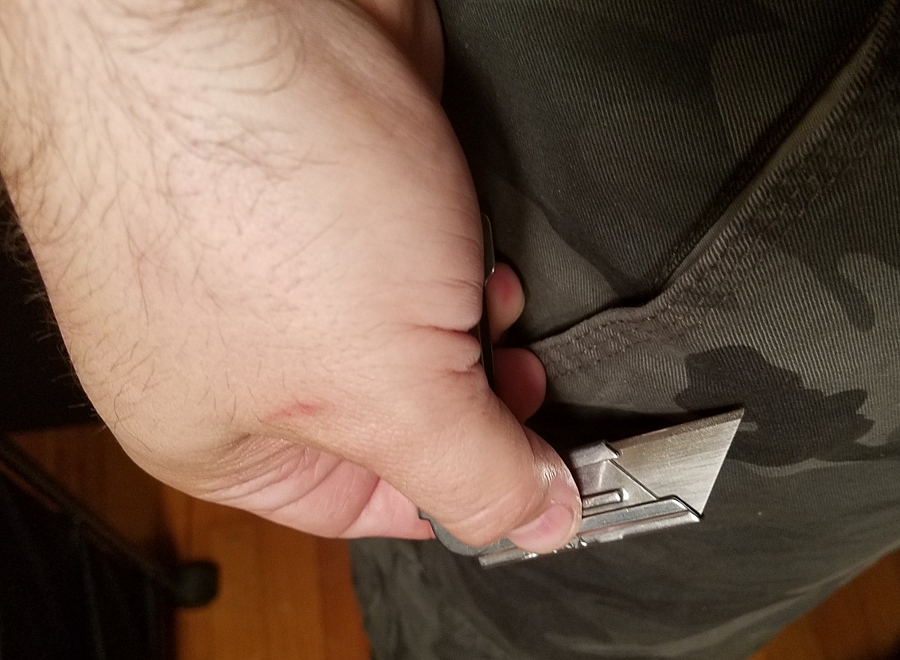
It makes sense. Criminals tend to prefer what is extremely cheap and disposable. They don’t carry expensive or sentimentally favored weapons because using a tool in a crime makes that tool a liability. You wouldn’t spend any more money than you had to on a weapon you were just going to throw away when you were done. There’s also the fact that, unlike a lot of pocket knives and even “fighting knives,” a razor blade has an edge that is… well, sharp as a razor. This means that it can do horrifying damage when used on another person, especially if it is used to target the face. A brand new utility razor can cut you deeper than a lot of factory fighting knives, to be sure, and that makes it something to fear as an offensive weapon.
But what about razor knives as a defensive tool? You, a citizen defender, are not carrying knives for the purpose of crime, and disposing of a knife after you used it for self-defense would only work against you. Is there still a reason you might carry a razor knife for self-defense or general utility?
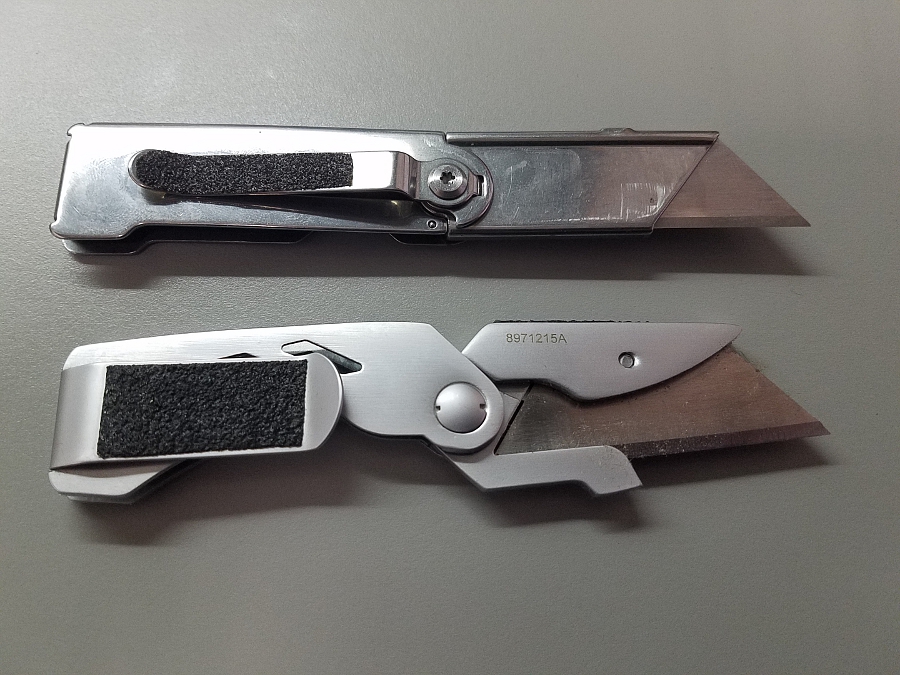
The answer is definitely yes. When choosing such a tool, you are no longer limited to cheap utility knives or box cutters of the type used by stock boys in grocery stores. You have access to a vast array of razor knives that operate just like pocket-clip-equipped folding knives, complete with locks. They use standard utility razor blades and their quality runs the gamut from relatively cheap to decent. Price also ranges accordingly.
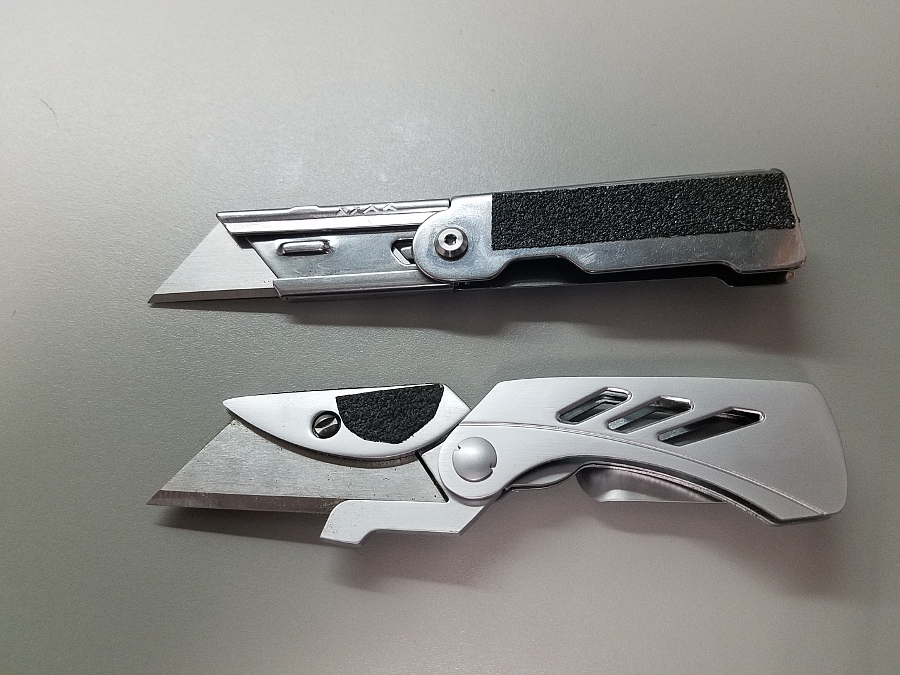
The idea isn’t new. There have been locking, folding razor knives on the market since the Superknife company first popularized the concept. The Gerber EAB (the bottom knife in the picture just above this paragraph) is a popular one made by a widely known sporting and tactical knife company. It is notable for its small size and minimal design. There are plenty of others.
Why Carry a Razor Knife?
The reason you might choose to carry such an inexpensive knife is that it’s easy to keep sharp as a razor. When it gets dull, you just change out the blade. Most of us use our knives for various utility tasks that dull them quickly, like breaking down cardboard boxes and opening packages. This means that if you were to need such a razor for self-defense purposes, it could be the sharpest thing you’ll ever carry.
There is a liability to such razor knives, though, and that is that while they’re cheap and easy to use, not to mention very sharp, they are often not as strong as more conventional “tactical” knives. The manufacturers of a lot of razor knives assume they’ll be used for utility purposes, so they don’t invest as much workmanship in the locking mechanism. The other issue with a razor knife is that it can’t really be used to stab. The corner of the blade can poke, but it won’t penetrate deeply (it isn’t really strong enough anyway). That means you are limited to slashing techniques when using a razor knife.
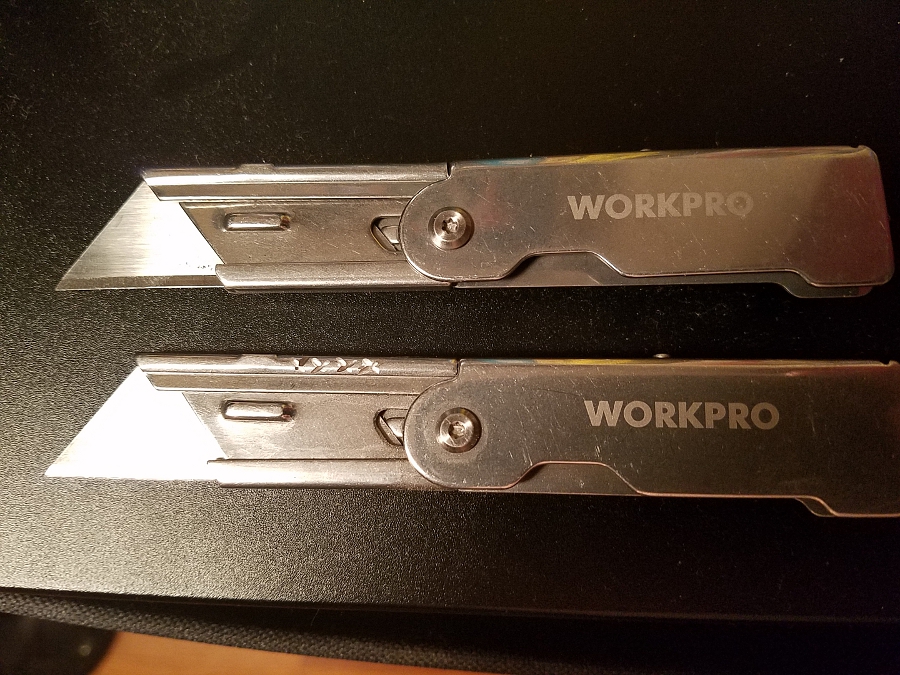
There’s good news: Slashing to get someone off you is a very widely accepted self-defense technique. Basically you just carve away at whatever comes near you, like an attacker’s limbs. And hey, if after the fact your razor knife is confiscated as evidence, you haven’t lost anything, have you?
There is a kind of “tactical trend” in recent years toward minimalist knives, or knives of extremely low cost that can be considered disposable. The razor knife could be considered part of this trend or, rather, a renewed interest in using it for self-defense could be. The goal should never be to see how cheaply you can get away with defending yourself, but rather, to recognize all of the options available to you. You should be able to equip yourself from “zero” by evaluating your options when you, say, get off a plane after going through airport security. No matter where you find yourself, no matter who you are, you ought to be able to equip yourself with the tools of self-defense. Recognizing the value of cheap razor knives is a step in that direction.
If you do choose to buy a razor knife for self-defense, look for a few things to stack the deck in your favor. The first thing you want to find, if you can, is a pocket clip that is at the hinge end of the handle. That means the razor blade, when closed, will be in the “tip down” position. An issue with the Gerber EAB, for example, is that its clip is at the non-hinge end, and as a result it can slide open in the pocket if you don’t watch it carefully. (This can result in you reaching in and finding an open blade with your fingers, in the worst-case scenario.)
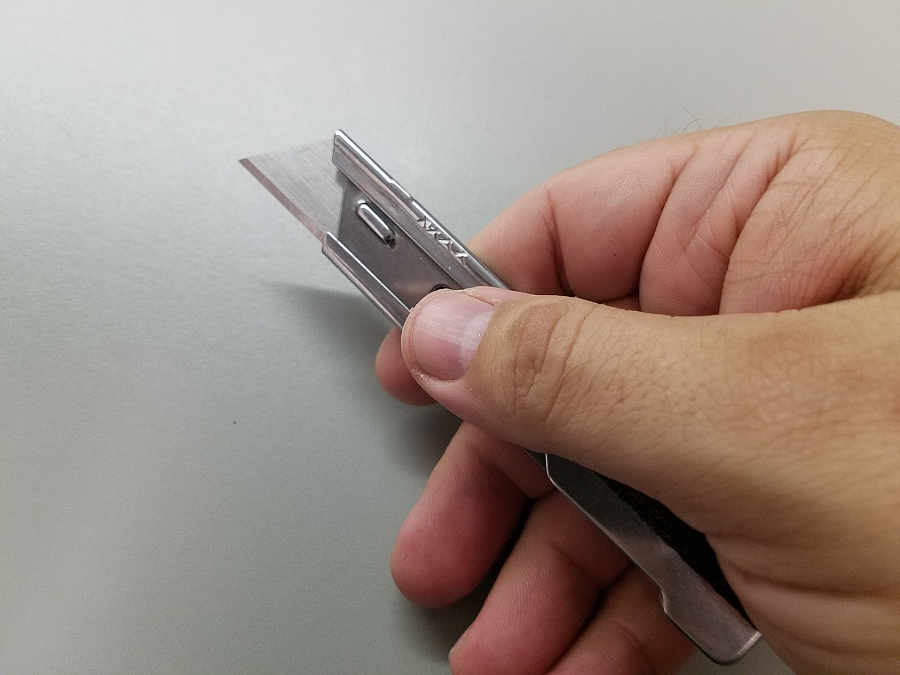
The second thing you want to look for is a design that secures the razor blade and won’t pop open while cutting (especially in a self-defense context). Some razor knives use more prominent “release” levers than others, which means they might be relatively easy to dislodge in use. It is a good idea to examine the relative lock strength if you are looking at different razor knives, too, choosing the one that is most sturdy.
Finally, when you select a razor knife, choose the one that you find easiest to open. Some of the more minimalist razor knives are so small that it’s difficult to get purchase with your thumb to open them. Other models, by contrast, have the same type of opening stud you would find on a pocket knife. I saw one YouTube video in which the owner of an all-stainless razor knife used a file to add cross-hatching to the part of the knife where the thumb digs in to snap the blade open. That prompted me to seek out the same model, the WorkPro razor knife pictured throughout this article.
WorkPro Folding Framelock Razor
The WorkPro is 3 inches closed and of stainless steel construction. The little tool features a “quick change” latch that, at first glance, seems to keep the blade in place during cutting reasonably well — while allowing for simple change-out of the blade without tools. It accepts any standard utility razor blade. I used a Dremel cutting wheel to make cross-hatches to provide purchase for my thumb, imitating what I’d seen on YouTube. I also added 3M stair tape, a commonly used grip tape that is rough like sandpaper.
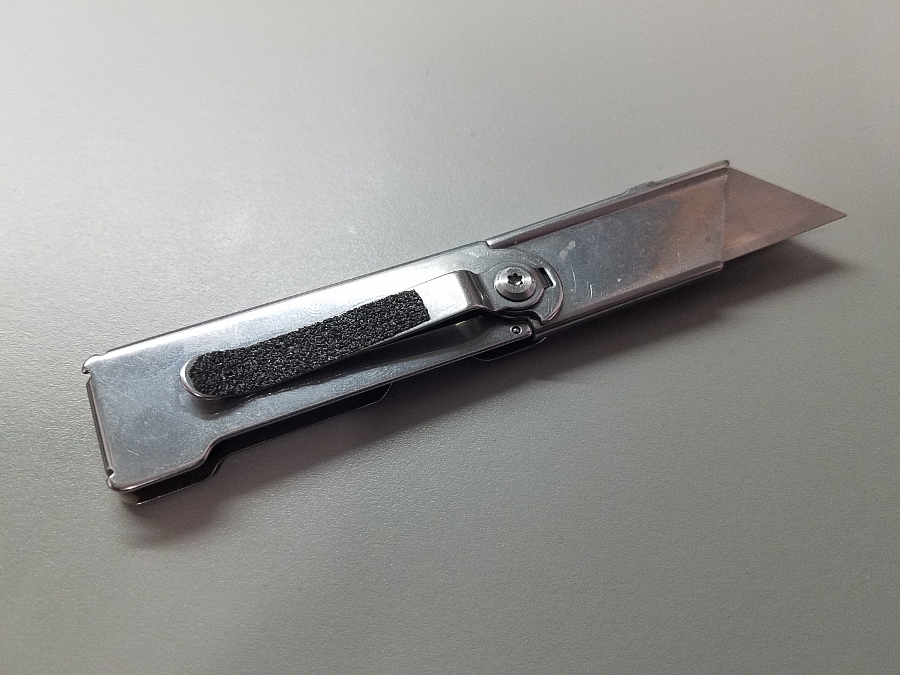
Even with my modifications, it’s relatively difficult to open the WorkPro with the thumb. The angle is tight and there’s not much to use for leverage. As a result, this model won’t be the best choice for use under the adrenaline of an encounter — not if it’s closed, anyway. You could choose to open it ahead of time if you had reason to suspect trouble was coming, though.
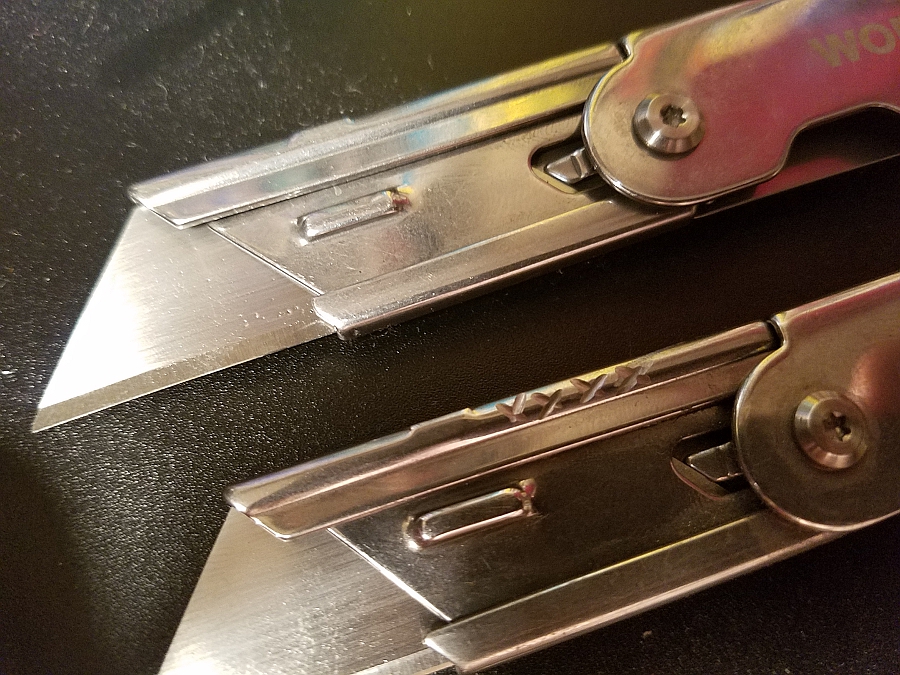
The little knife is a frame lock. The lock is reliable once you get it to engage, but this sometimes requires a forceful push with the fingers to get the frame to snap into place against pivoting razor receptacle. The whole package is extremely compact and very easy to carry, but I would recommend removing and bending the pocket clip to increase its tension. Otherwise, you’ll end up losing the little knife (which is so light you won’t realize it’s left you until well after it’s gone.
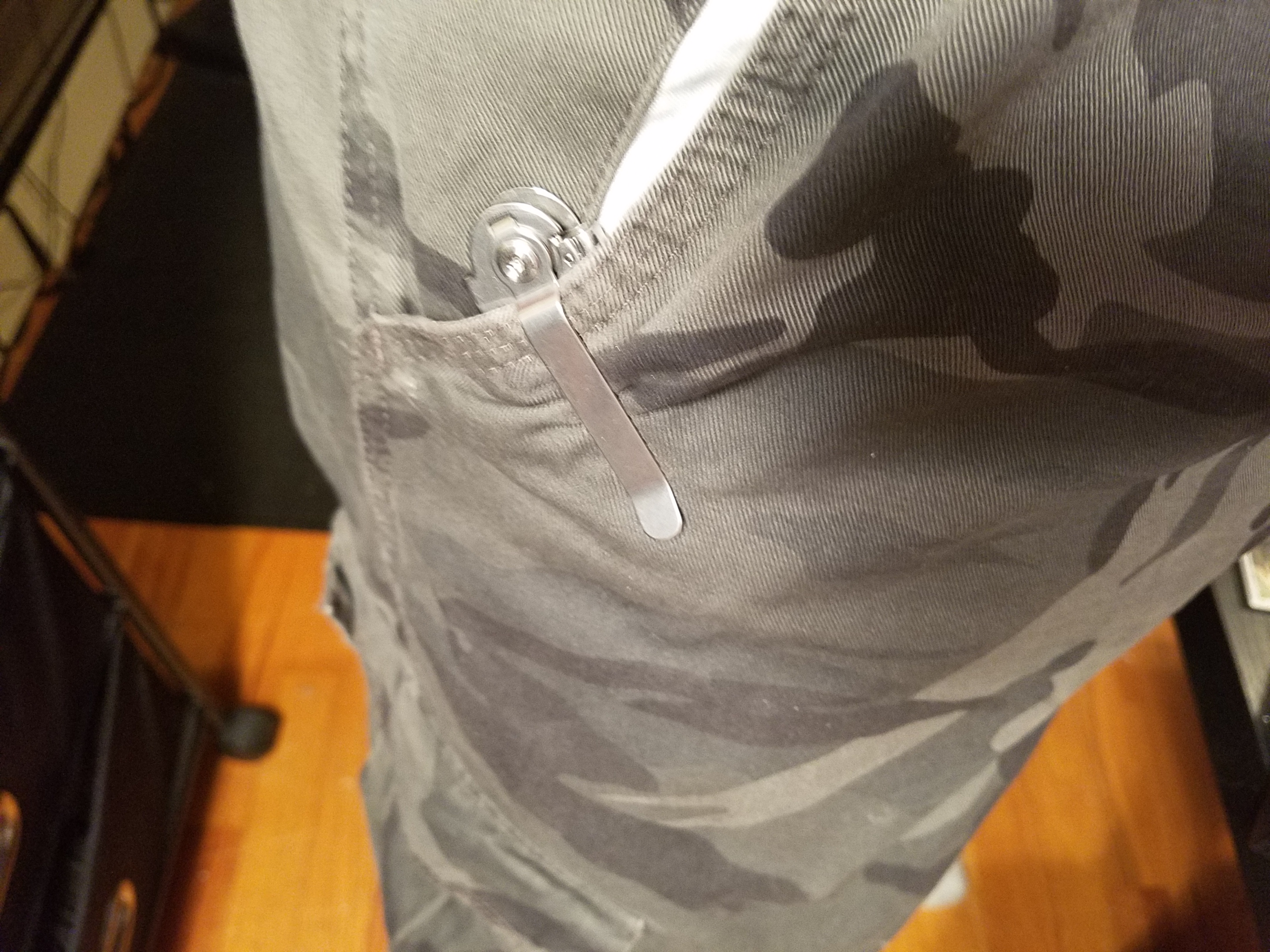
Toting a Razor Tool
Regardless of the model you choose, carrying a razor knife is just a matter of practice and use. The good news here is that while we are sometimes reluctant to use a good tactical knife for utility chores (for fear of dulling it and then having to resharpen it), there is no such concern with a razor knife. You can use it all day long and then just swap out the blade for a fresh one, even keeping a “practice and daily use” blade handy to swap out for when you want to do some cutting (or just break down the recycling before it goes out to the curb).
Razor knives are a great addition to any self-defense toolbox. They can’t do everything, but they’re hard to be beat for utility work, precision cutting, and even effective self-defense slicing. Respect them and they’ll take care of you.